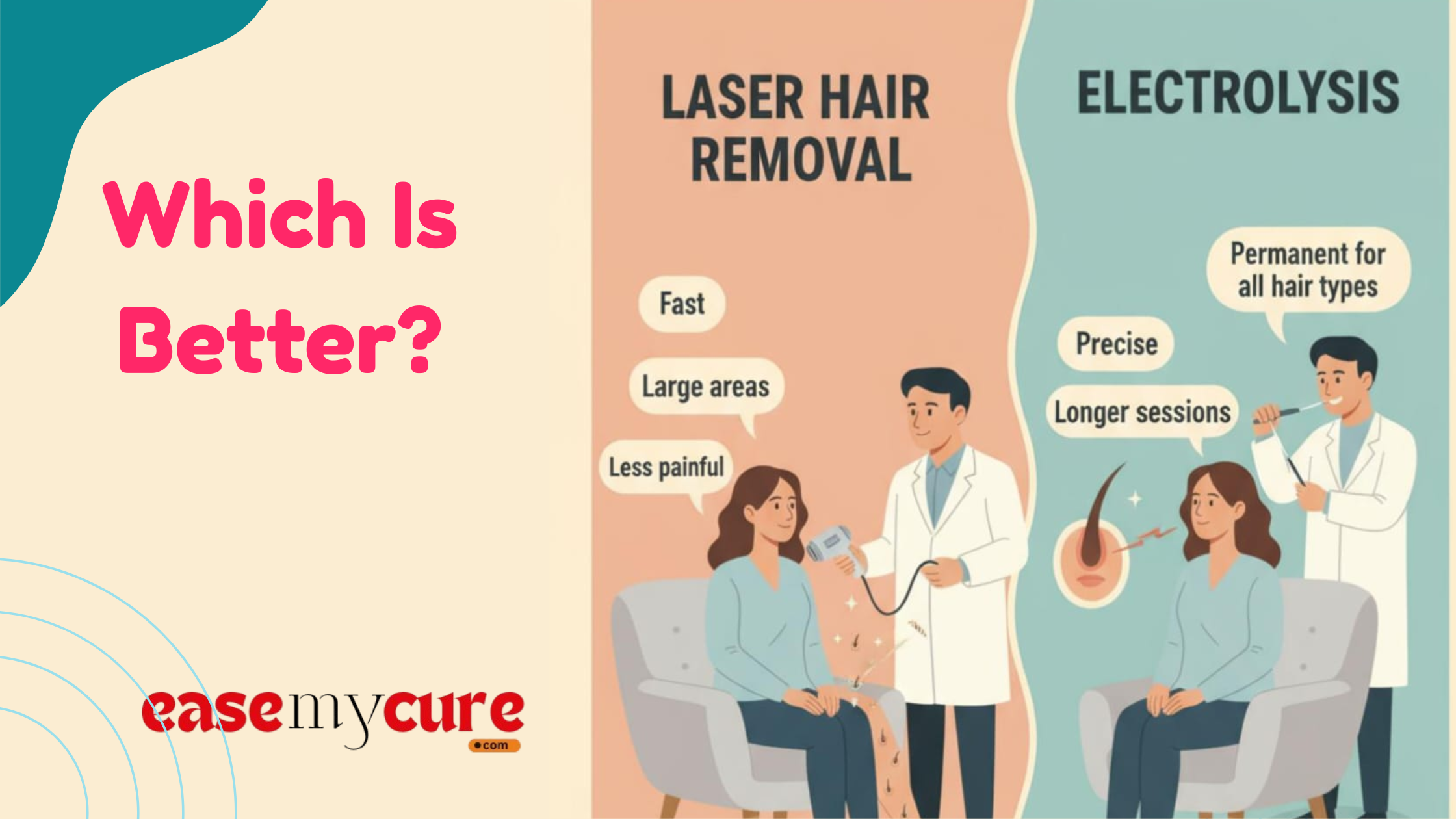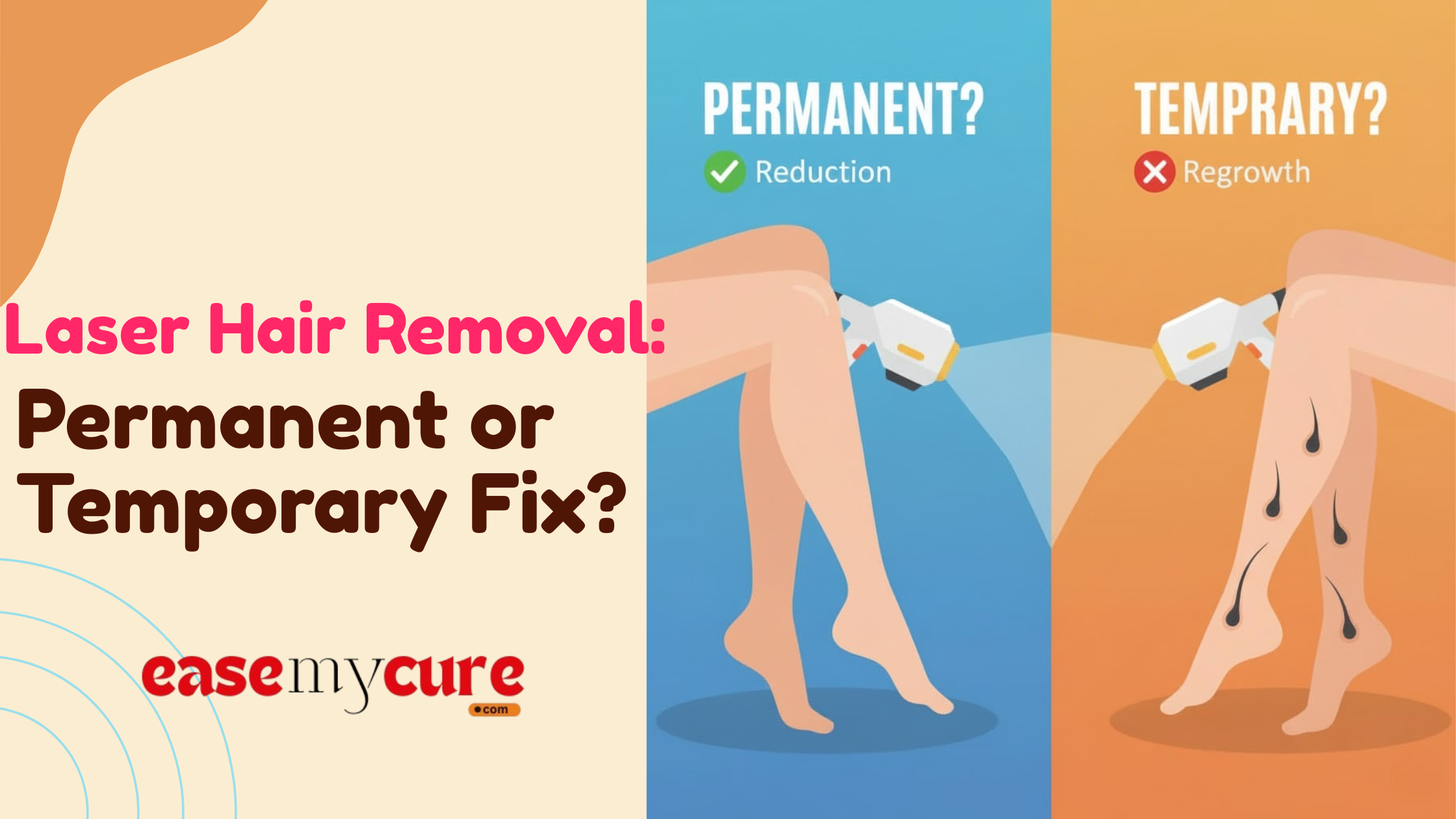Unwanted hair can be frustrating, time-consuming, and costly to manage. Traditional methods like shaving, waxing, and depilatory creams offer only temporary relief, often leaving behind irritation, ingrown hairs, or stubble within days. For those seeking longer-lasting results, non-surgical hair removal treatments like laser hair removal and electrolysis have become the most trusted solutions.
These treatments not only reduce the hassle of daily hair management but also provide smoother, longer-lasting results that improve confidence and convenience. Both laser hair removal and electrolysis work by targeting hair follicles to stop or slow down regrowth, but their methods and outcomes are different.
Laser hair removal has gained popularity for its speed and ability to cover large areas quickly, making it a go-to option for people with busy lifestyles. On the other hand, electrolysis has the distinction of being the only FDA-approved treatment for permanent hair removal, making it highly appealing to those looking for a once-and-for-all solution.
So, which treatment is better? The answer depends on your hair type, skin tone, treatment goals, and budget. This blog will dive into how both methods work, their pros and cons, and what you should consider before making your choice.
What Is Laser Hair Removal?
Laser hair removal uses concentrated beams of light to target the pigment (melanin) in hair follicles. The laser’s heat damages the follicle, which slows or prevents future hair growth. It’s one of the most common cosmetic procedures performed worldwide, thanks to its efficiency and long-lasting results.
How it works
During treatment, a handheld device emits pulses of laser energy. The heat penetrates the skin, reaching the follicle without damaging surrounding tissues. Because it targets melanin, laser hair removal works best on individuals with dark hair and lighter skin. Advances in technology, however, have made it increasingly safe and effective for a wider range of skin tones.
Treatment process
- Sessions typically last between 20 minutes to an hour, depending on the size of the treatment area.
- Common areas include the legs, arms, underarms, bikini line, chest, and back.
- Multiple sessions (usually 6–8) are required because hair grows in cycles, and the laser is most effective during the active growth phase.
Results and longevity
Most patients notice significant hair reduction—up to 80–90%—after completing their sessions. Maintenance treatments may be needed once or twice a year to maintain results.
Benefits
- Fast treatment for large areas.
- Long-lasting hair reduction.
- Minimal discomfort compared to waxing.
Limitations
- Less effective on blonde, grey, or red hair.
- Not guaranteed permanent removal.
- Can be costly depending on the treatment area.
What Is Electrolysis?
Electrolysis is the only FDA-approved method for permanent hair removal. Unlike laser hair removal, which targets pigment, electrolysis uses an electrical current to destroy the hair follicle directly. This ensures the follicle cannot grow hair again.
How it works
A very fine probe is inserted into the hair follicle, delivering a small electric current that damages the follicle beyond repair. Once treated, the follicle can no longer produce hair. Unlike lasers, electrolysis does not rely on hair colour or skin tone, making it suitable for all types of hair and skin.
Treatment process
- Each follicle is treated individually, making the process more time-consuming.
- Sessions typically last 15–60 minutes, depending on the number of hairs treated.
- Because every follicle must be targeted, multiple sessions over months or even years are required for complete removal.
Results and longevity
Once complete, results are permanent. Treated follicles do not regenerate, and hair removal is final.
Benefits
- Permanent results after a full course of treatments.
- Effective on all hair types, including blonde, red, grey, or fine hair.
- Can treat small, sensitive areas like the upper lip, chin, or eyebrows.
Limitations
- Time-intensive due to individual follicle targeting.
- Can be more painful than a laser for some patients.
- Requires commitment to a long treatment plan.
Laser Hair Removal vs Electrolysis – Key Differences
Both treatments target hair follicles, but their approach and outcomes differ significantly.
- Effectiveness
- Laser: Provides long-term hair reduction (80–90%) but not always permanent. Maintenance is usually required.
- Electrolysis: Permanent removal approved by the FDA. Once complete, hair does not return.
2. Speed and convenience
- Laser: Can treat large areas quickly (e.g., full legs in under an hour).
- Electrolysis: Slower, as each follicle must be treated individually. More suited to small or precise areas.
3. Suitability
- Laser: Best for people with dark hair and light to medium skin. Newer technologies can accommodate darker skin tones.
- Electrolysis: Works for all hair colours and skin types. Ideal for treating light or fine hairs that the laser cannot target.
4. Pain levels
- Laser: Feels like a rubber band snapping against the skin. Generally well-tolerated, with cooling systems to reduce discomfort.
- Electrolysis: Can feel like a stinging or pricking sensation, often considered more uncomfortable than laser.
5. Side effects
- Laser: Temporary redness, swelling, or irritation. Rarely, changes in skin pigmentation.
Electrolysis: Redness, scabbing, or swelling at treated follicles. Requires careful aftercare to avoid infection.
6. Cost
- Laser: £150–£350 per session, depending on the area. Fewer sessions needed overall.
- Electrolysis: £40–£100 per session, but many more sessions are required, especially for large areas.
7. Long-term investment
- Lasers may cost more upfront, but are efficient for large areas.
- Electrolysis may cost more in the long run due to the number of sessions required, but it guarantees permanent results.
8. Combination approach
Some patients use lasers for large areas and electrolysis for stubborn hairs that remain. This combination provides both speed and permanence.
Conclusion
Choosing between laser hair removal and electrolysis depends on your unique needs and goals. If you want quick results on large areas and are comfortable with long-term reduction rather than total permanence, laser hair removal may be your best option. It is faster, less painful, and more cost-effective for extensive areas like the legs, arms, or back.
However, if your priority is complete and permanent removal, regardless of hair colour or skin tone, electrolysis is the superior choice. While it requires patience and more treatment sessions, the results are final. Electrolysis is also ideal for smaller, more precise areas where permanent removal is desired.
Ultimately, the best way to decide is through a consultation with a qualified practitioner. Find the safest and most affordable hair removal solution for you. Compare clinics offering laser and electrolysis treatments on easemycure today. Whether you choose laser, electrolysis, or a combination of both, you’ll be investing in smoother, more confident living.
Please check This also:- Diode vs IPL hair removal
FAQs






